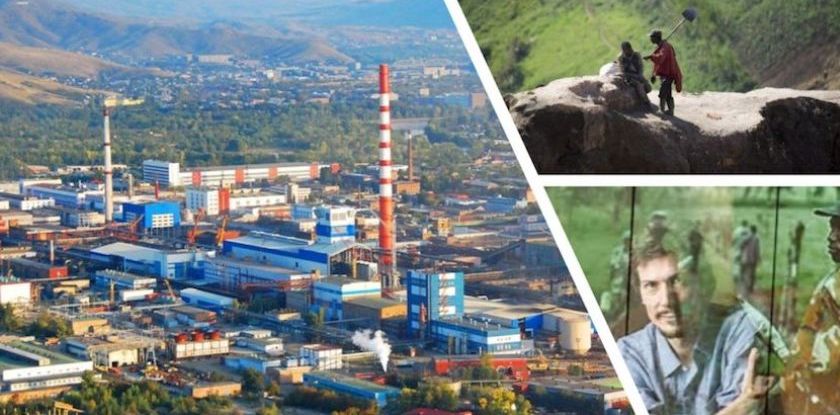Portal KZ.MEDIA tells a fascinating story of how Kazakhstan got involved in the shadowy international schemes of the coltan extraction and the funding of the civil war in Congo.
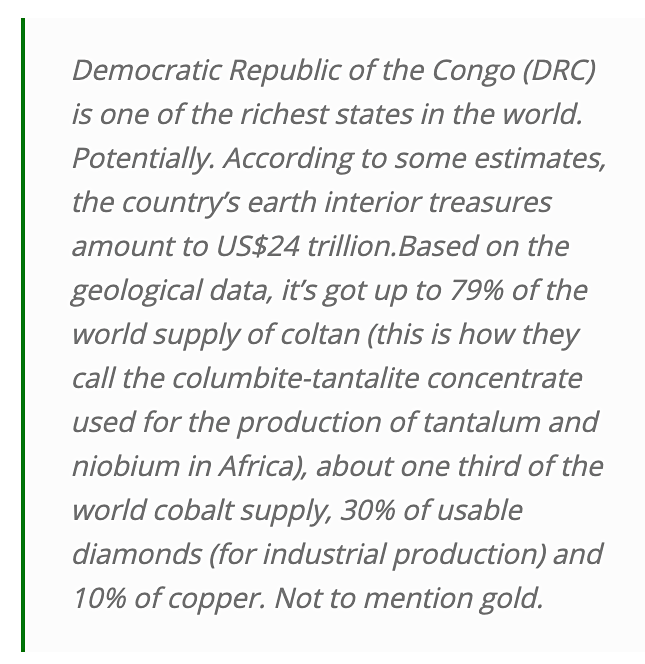 The criminal case opened by the Swiss authorities against a Belgian Chris Huber has made us think of how Kazakhstan got sucked into the shadowy international schemes of coltan extraction and financing the civil war in Congo.
The criminal case opened by the Swiss authorities against a Belgian Chris Huber has made us think of how Kazakhstan got sucked into the shadowy international schemes of coltan extraction and financing the civil war in Congo.
The Swiss authorities officially confirmed some time ago that they had been conducting an investigation of the war crimes committed by Chris Hubert in the DRC. Apart from that, Hubert may be indicted for illegal coltan deliveries — the material used for the production of tantalum and niobium (the metals that, despite their unfamiliar names, are used in all the modern electronic devices).
The crimes investigated by the Swiss authorities had been committed during the period from 1998 to 2003 when Congo, as a result of the civil conflict, was, de facto, occupied by the armies of the neighbouring countries. Note that all of them had somehow turned up in those Congo regions that were participially rich in natural resources.
The eastern part of Congo was one of such regions. It was controlled by the RCD-Goma militarised units that were fighting against the central government sitting in Kinshasa. The Rwanda army headquarters was coordinating the operations of these units. Thus, via this simple method, Rwanda had established control over the region where big coltan deposits were discovered. The market demand for tantalum production was at its height at that point.
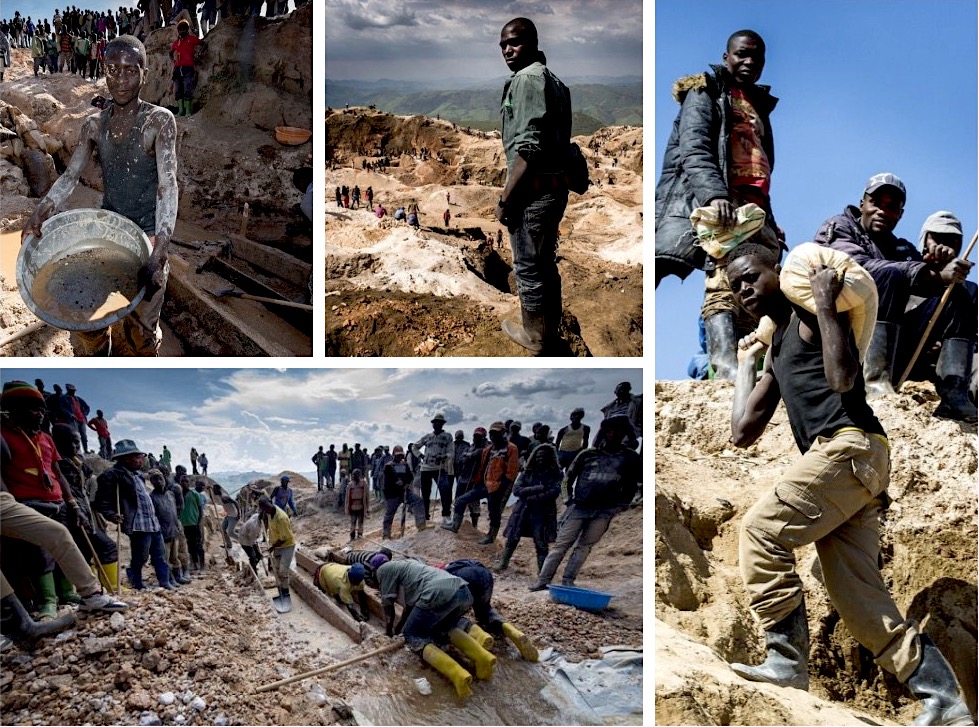
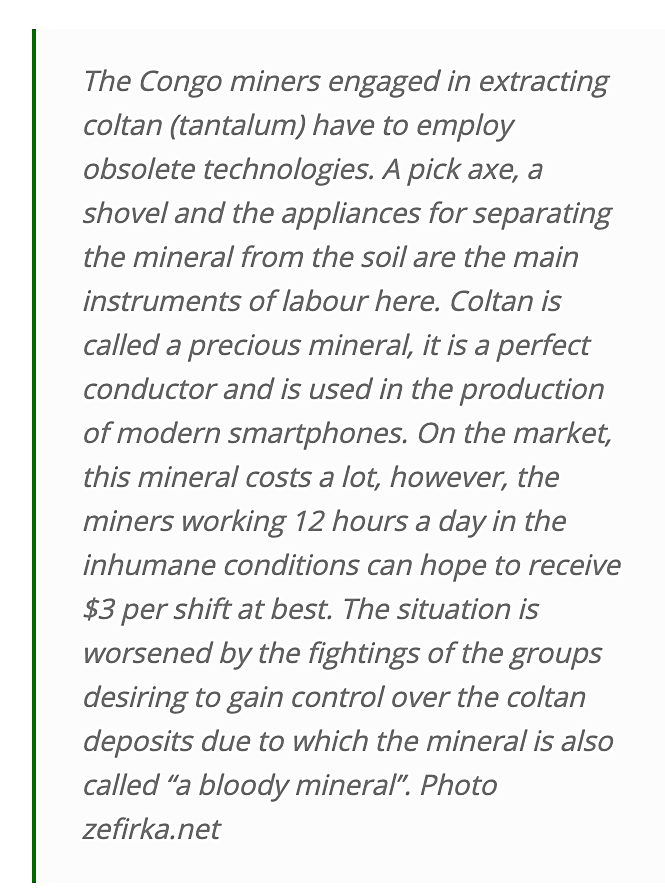 This was a period of the high-tech boom and the planet was preparing for the bright future of the post-industrial world. However, this future was being born inside the belly of a usual colonial war whose only specific feature was that it was led not by the European but by the neighbouring African countries. On the other hand, the Europeans could be actively involved in it in the private capacity.
This was a period of the high-tech boom and the planet was preparing for the bright future of the post-industrial world. However, this future was being born inside the belly of a usual colonial war whose only specific feature was that it was led not by the European but by the neighbouring African countries. On the other hand, the Europeans could be actively involved in it in the private capacity.
Chris Huber was one such European who, according to the Swiss prosecutors, had established a business-relationship with the RCD-Goma militarised groups. The Rwanda generals had been delivering the raw materials to Huber’s firms and he «laundered» them, in other words, organised its refining at industrial facilities and then sold the metals to end consumers.
Judging by the publicly-accessibly data, the prosecutors do have the documents that can put Hubert in prison for more than three years. This is what they usually get in Switzerland for committing military crimes.
However, the information on stirring up the attempts to take down Hubert says nothing about the second side of these shadowy deals — the one that, in fact, was engaged in refining coltan into tantalum and niobium that were then sold to electronics producers. Meanwhile, it was this side that had made the entire scheme of the coltan extraction and the civil war financing possible.
We are talking about Kazakhstan. It was at the Ulbinsk metallurgical plant where the refining and (the laundering) of the Congo coltan took place.
In Kazakhstan, Chris Hubert is known as Chris Huber — an Anglicised version of the French name. The coltan was delivered to the plant by an Ust-Kamenigirsk airline company. First, it was Ulba-Avia that was then taken over by Irtysh-Avia. Victor But who simply used the legal form of the Kazakh airline company is believed to have been the real architect of delivering the raw materials to the plant.
In 2000, the relationship between Kazakhstan and Hubert ended. He was accused of tax evasion and denied the access to the Ulbinsk plant. It is possible that these rearrangements were connected with Rakhat Aliyev (Nursultan Nazarbayev’s son-in-law who had a special interest in the atomic subjects) solidifying his position in power at the time. It was then when Mukhtar Dzhakishev became the head of Kazatomprom which the Ulbinsk plant was a part of.
Ust-Kamenogorsk - Rwanda
The Ulba-Avia airline was founded in 1993; its fleet consisted of four Yak-42 of which only one is still in service (as part of Kazakhstan’s Air Force). Ust-Kamenogorsk was used as the airline base airport.
In 1999, Ulba was taken over by Irtysh-Avia that was also based in Ust-Kamenogorsk and its fleet consisted of ten Yak-40 and seven Yak-42 (including the planes acquired from Ulba-Avia). Of them, four planes were in service (including the plane belonging to the Air Force). The remaining three were used by the KAZ AIR JAT airline engaged in organising business charters. Today, this company belongs to the business-empire of Alexander Klebanov. As for Irtysh-Avia, it ceased to exist in 2003. This happened as a result of the merger with Air Kazakhstan, the company that was closed a year after the transaction – in February 2004.
According to the 2002 report of Belgian institute IPIS, Ulba and Irtysh had been actively collaborating with AIR CESS-CESSAVIA by renting planes from the latter. AIR CESS was founded in 1995 and was based in Belgian airport Ostend but all its jets were registered in Liberia.
This company was a part of the business-empire of the notorious Victor But who, at the time, was at the peak of his power. He was managing a network of the businesses specialising in air-transportation logistics and an entire fleet of 50 cargo and commercial jets ready to fly to the least accessible parts of the planet. It was Africa’s biggest commercial fleet. Africa also accounted for about 90% of the world demand on the arms market.
Therefore, the report’s authors believe that the coltan supplies to the Ulbinsk plant could be a part of the general logistics scheme of But who specialised in arms deliveries.
Congo — Kazakhstan: How the Scheme Worked
The person who knows better than anyone (apart from those involved in the schemes, of course) about how the business of coltan deliveries from Congo to Kazakhstan was organised is Timothy Raeymaekers, the author of the numerous reports on the state of affairs in Congo published at the beginning of the 00. Currently, Raeymaekers is teaching at the Ghent University. He is specialising in political geography and his students write papers on the subject of conflict albeit in a strictly academic sense.
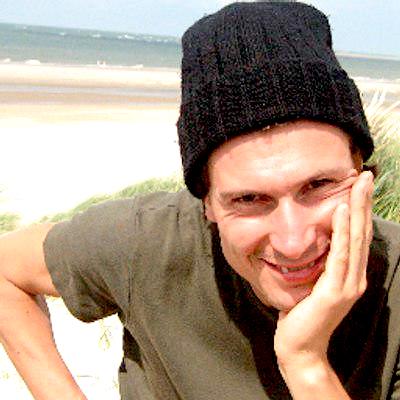 Raemaekers recalls that, as soon as Kazatomprom started to be mentioned in his research, he began to receive «strange» letters advising him to back off from the subject.
Raemaekers recalls that, as soon as Kazatomprom started to be mentioned in his research, he began to receive «strange» letters advising him to back off from the subject.
The public interest towards the subject has indeed diminished and Kazakhstan has disappeared from the media-radars completely. However, Raemaekers believes that it only means that the new delivery schemes are much more efficient and, from the Congolese jungle, the conflicts have moved to the corporate debris created by the new generation of these metals traders.
We have spoken to Timothy Raemaekers about the history and the topical issues of the coltan business.
— How was the Congo coltan refining scheme launched in Kazakhstan?
— It was created by Semen Briskin — a Russian entrepreneur with the Kazakhstan connections.
Who Is Semen Briskin?
In Russia, the name of Semen Zinovyevich Briskin is associated with the Petra transportation shipping company (Petra literally stands for “shipping by transport”). It was one of the first private companies on the market. It employed the children of the then top-managers of the Russian Ministry of Transportation (today’s Russian Railways) and the future founders of N-trans – the leading private operator on the transportation service market of the former USSR. Konstantin Nikolaev, the current co-owner and N-trans’ CEO was a graduate from the Philosophy Department at Moscow State University and knew Petra’s founder Semen Briskin (both are Dnipropetrovsk natives).
In February 1995, Petra JSC signed a contract for the cargo (tank-cars with fuels and lubricants) transportation shipping services with the Angarsk Petrochemical Company (APCC), the biggest enterprise in the Eastern Siberia. But after the enterprise became the target in a real war, Petra’s Chair Semen Briskin unexpectedly left Russia. He was able to come back to his homeland after some time had passed and was even engaged in doing business, however, starting from the mid-00, his trace is lost.
In 1990, when he had been experiencing problems in the Russian business, he had to hide in Switzerland. It was there where he met Chris Hubert with whom they’d started the joint project on exporting the coltan from Congo.
As far as I know, Briskin was funding all the operations. In fact, there had been rumours on the market that Hubert was simply representing somebody else’s interests. In Rwanda, Hubert and Briskin had a whole laboratory in which they had been assessing the minerals that came from the Congo deposits. After that, the materials were sent to Hong Kong and from there — to the Ulbinsk plant, Kazatolprom’s enterprise. It is here where the refining of the coltan was conducted after which the finished product was delivered to China.
In Hong Kong, all the operations were carried out through the Pacific Ores company that was managed by Alan Crawley, a well-known and influential figure in the coltan business. By the way, he is still there.
Finconcord, a Briskin-Hubert company operated in Kazakhstan. The interests of this company were represented by a certain Vitaly Frolov. Lev Nakhmanovich used to come to Switzerland to sign the contracts from Kazakhstan. When flying, he used a diplomatic passport. Vitaly Mette provided a political cover in the region.
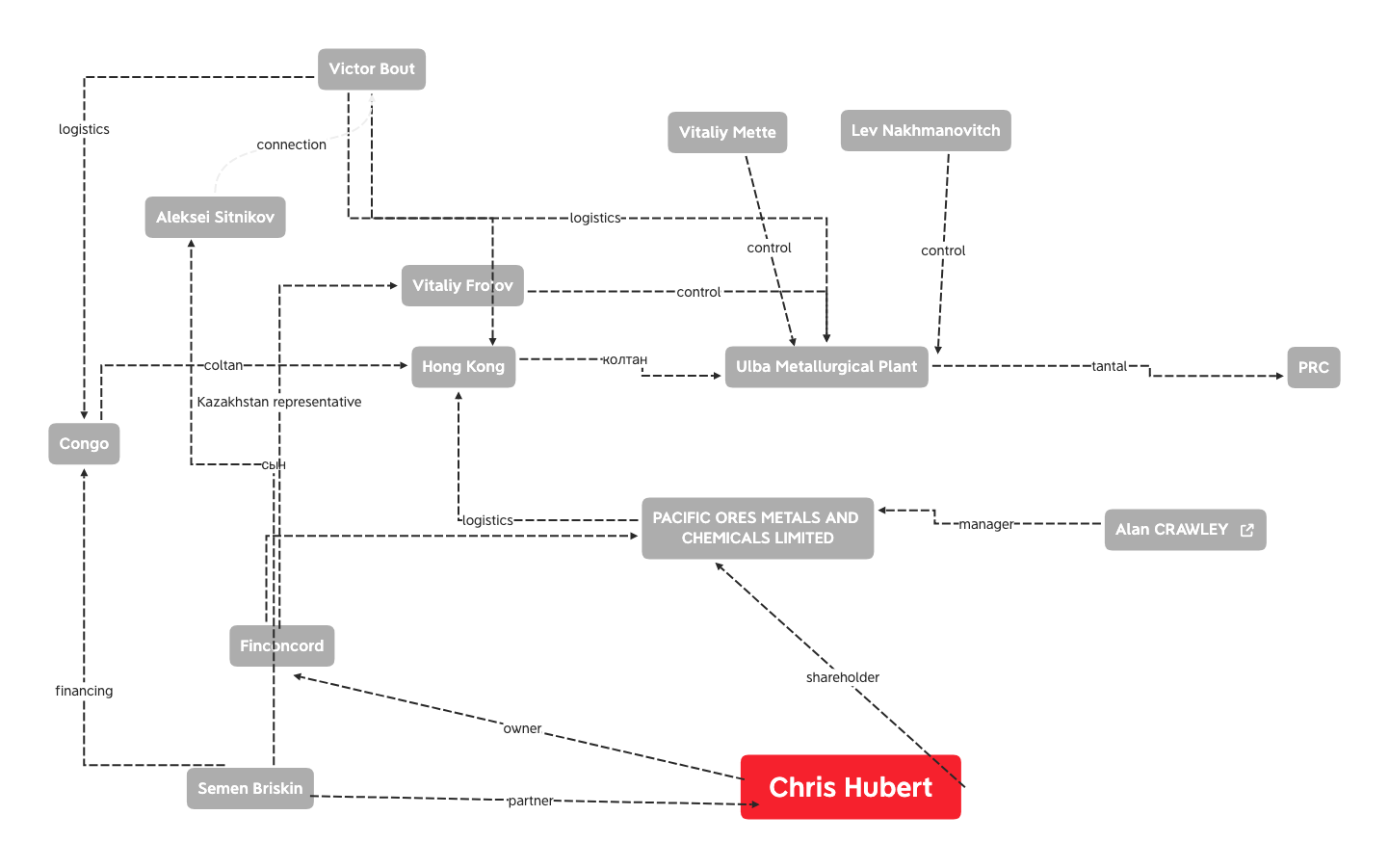
Dangerous Liaisons
So far, we haven’t been able to find any information in regard to the fate of Vitaly Frolov. Mette and Nakhmanovich, on the other hand, are quite well-known in Kazakhstan. For a long time, Vitaly Leonidovich Mette had worked at the Ulbinsk plant and chaired it. During the targeted period, he was in charge of East-Kazakhstan region. And, on the nights of July 3 to July 4, unexpectedly passed away from a serious illness whose origins are still being debated. In his turn, Lev Nakhmanovich may claim to be the most adventurist persona of the 1990s. The man who is believed to be one of the architects of the notorious “aviso” scheme that let many an influential oligarch make their fortunes has passed away relatively recently. But even being seriously ill, he was mixed up in the story with the lost Nurbank bankers and testified before the Austrian investigators literally from his deathbed.
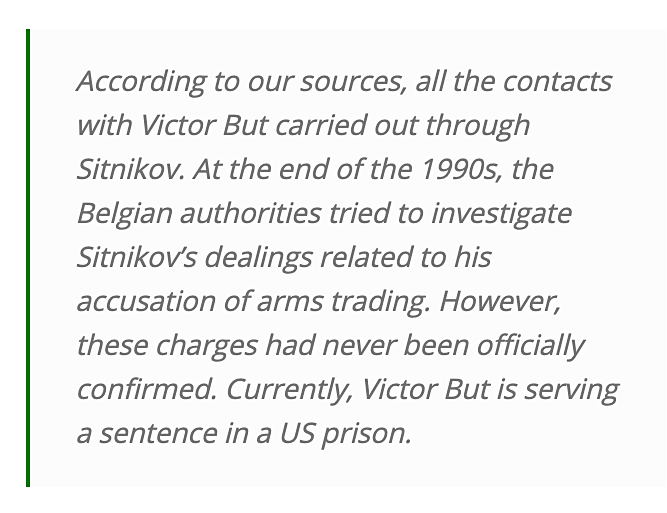 — Is anything known about Briskin’s assets in Kazakhstan?
— Is anything known about Briskin’s assets in Kazakhstan?
— In Kazakhstan, Briskin had his own asset — the Belogorsky Mining and Processing Plant. His son Alexey Sitnikov was Briskin’s partner in Kazakhstan.
— What is known about Hubert’s current whereabouts and his current occupation?
— It is not clear albeit the investigators are obviously in possession of this information.
— Is this the first time the law-enforcement authorities have shown interest in him?
— No. Once, Hubert was accused of trafficking nuclear materials. But now he is accused of illegal supplies of minerals and war crimes. These are very serious accusations.
— How do you assess the Kazakhstan — Congo combination in this macabre story?
— Both Congo and Kazakhstan had been performing the role of a new «frontier» for the international business.
— What do you mean?
— The thing is that, earlier, the supplies of the raw materials for the tantalum production had been provided by large mines of several developed countries — Australia and Canada. Imagine huge opencast mines with all the industrial engineering equipment. This is an industrial scale. The refining of the raw materials was also conducted at several facilities in the developed countries of the West. The Ulbinsk plant was obviously not among them since it was a part of the Soviet atomic complex. And then, suddenly, everything changes. Completely new players appear on the market.
— As far as the Ulbinsk plant is concerned, the situation is clear. It needed clients amid the collapse of everything Soviet. But what does it have to do with Congo?
— The thing is that, in Congo, the coltan extraction is conducted via a completely different method. Ore material here is present in the form of black sand that represents the solid solution of columbite and tantalite — the material used for the niobium and tantalum production. It is obtained not by the opencast mining but by panning — the method so well known from the movies and novels about the gold hunters.
So, this method of extraction does not require an army of powerful equipment. A group of people with simple tools would suffice. Big investments are not needed, either. Therefore, new players have an opportunity to enter the market.
In 1990s, in the contemplation of the high-tech revolution, the rare earth elements market had been experiencing a true craze, the demand for tantalum and the prices for it had been growing with an accelerated speed. As a result, however, the industrial development business was threatened. The groups of workers equipped with primitive tools and spread all over the Congo jungle were posing a threat to all these huge opencast mines equipped with tipping lorries.
— In other words, the «old» mining industry started to defend its interests and came crushing down on the new illegal business of the Rwanda military forces?
— Undoubtedly. Especially since it was the Rwanda military forces that had played a special role in this new «coltan» economy. I would say that the army of this country and its leadership were up to their ears in this business. It was thanks to their involvement that exporting the coltan from the country became possible in the first place. This was the main reason for the Rwanda troops to be present on the Congo territory. Hubert had managed to establish the contacts with the Rwanda army and organise the reception of the coltan delivered from Congo. This is why Hubert is being accused of war crimes. He was very deeply involved in this business.
New Players at the New Frontiers
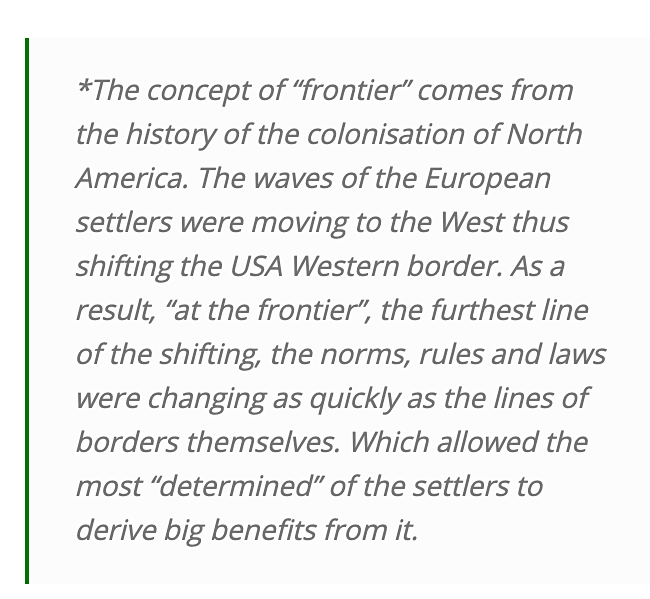 The 1990s had ensured the appearance of the «frontiers»* in all kinds of places. And the logic of their appearance was similar everywhere. New deposits and new players had appeared on the minerals markets starting to knock down the established infrastructure that consisted of large concerns playing by the clearly established rules and on the basis of the scrupulously observed agreements.
The 1990s had ensured the appearance of the «frontiers»* in all kinds of places. And the logic of their appearance was similar everywhere. New deposits and new players had appeared on the minerals markets starting to knock down the established infrastructure that consisted of large concerns playing by the clearly established rules and on the basis of the scrupulously observed agreements.
Strictly speaking, it was not even a market but a classical oligopoly that had been teared up by the new players that could rely on the shadowy and unabashedly illegal schemes. It was not too hard to strike a blow against this kind of schemes.
We may leave the 1990 but the 1990s will never leave us. This is how one can describe the essence of what is going on in the country today. The main conflicts that had shattered the national political system were formed exactly during that critically important decade that may be described with one word — «frontier».
In the 1990s, the young republic of Kazakhstan was faced with monstrous problems — the lack of the resources, the money, the state orders, the managerial and engineering manpower. In these circumstances, even the biggest enterprises created for the Soviet defence industry had been forced to survive.
There is nothing surprising in the fact that, under the conditions of this deficit, the vacuum was filled by anyone who wished to fill it. Back then, it seemed that the system of the rogue capitalism would be temporary. However, eventually, it had gained access to managing the political system. And all the schemes created in those years, even though they had been formally crushed, have retained their importance in the current times albeit in a new form. And there is no reason to believe that they will disappear by themselves. The thing is that they have been built into the chains of the global shadow economy whose managers know no territorial, legal or moral limits.
In this regard, the connection between Kazakhstan and Congo is particularly telling. This connection had been influencing and continues to influence the political and economic landscapes in both countries separated by thousands of kilometres.
We will examine these connections in more detail. In this first publication, we wanted to show you the general context of these ties. The context which in itself is quite fascinating. And, let us repeat, the one that has an independent political significance in modern Kazakhstan.

